Abstract
The involvement of the immune system in the host response to tumors is complex and involves both lymphocytes and lymphocyte-derived mediators, as well as inflammatory cells and various other agents such as complement. These activies are not confined to cytodestructive processes; recent studies demonstrate that the migration characteristics of tumor cells may be modified by immunologically derived substances. The multiplicity of possible immune system-neoplastic cell interaction is unfortunately balanced by the multiplicity of mechanisms that serve to interfere with an effective immune response to tumors. These mechanisms may reflect pathologic derangements of normal immunoregulatory processes or may involve the production of suppressive substances by the tumors themselves. In either case, a number of genetic and other predisposing factors must contribute to the ultimate resolution of the battle between host and tumor. Successful strategies for immunologic intervention must take these parameters into account.
Full text
PDF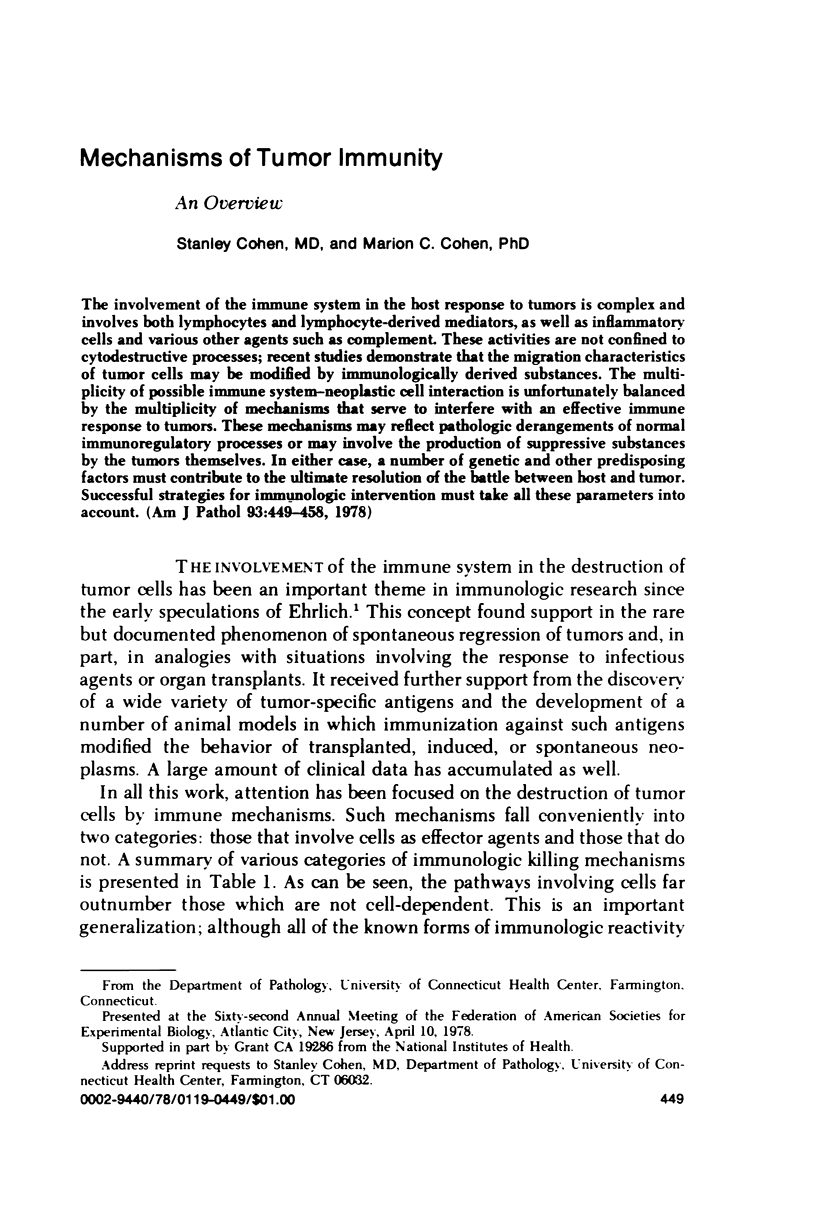
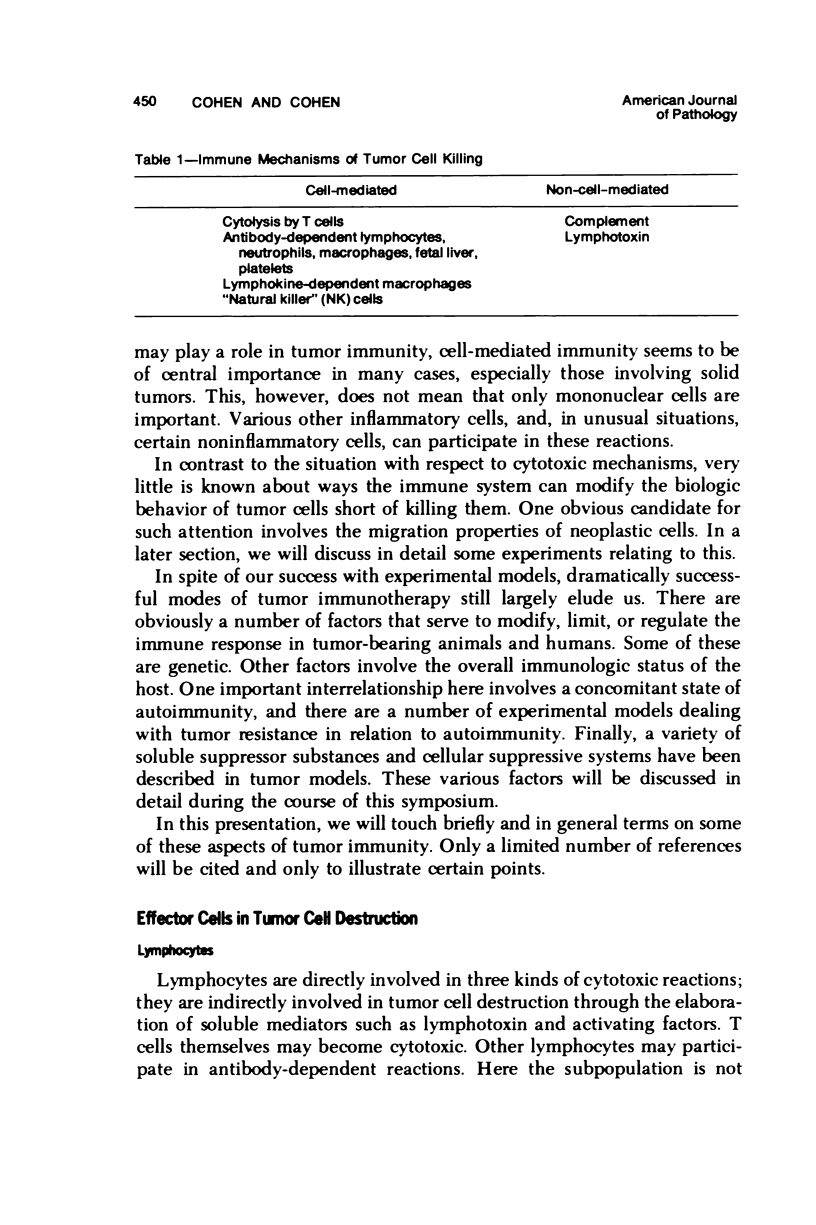

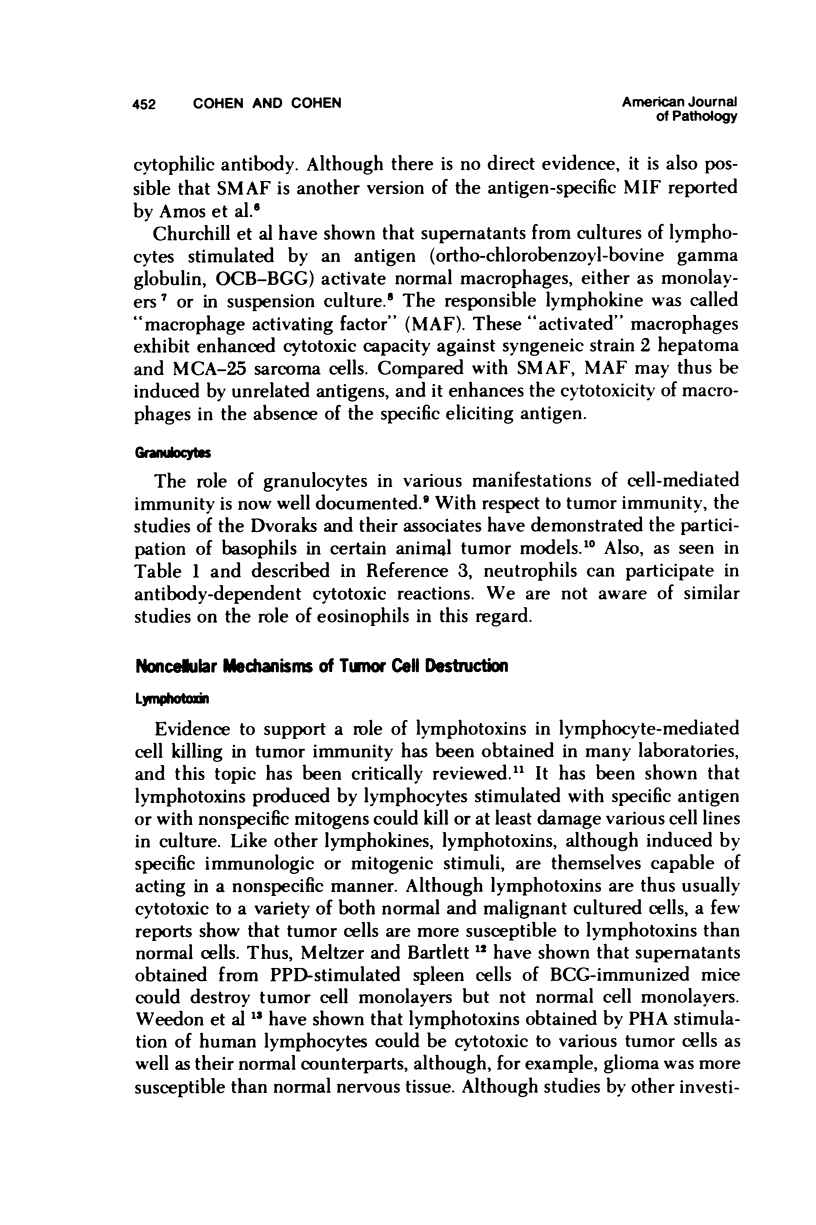
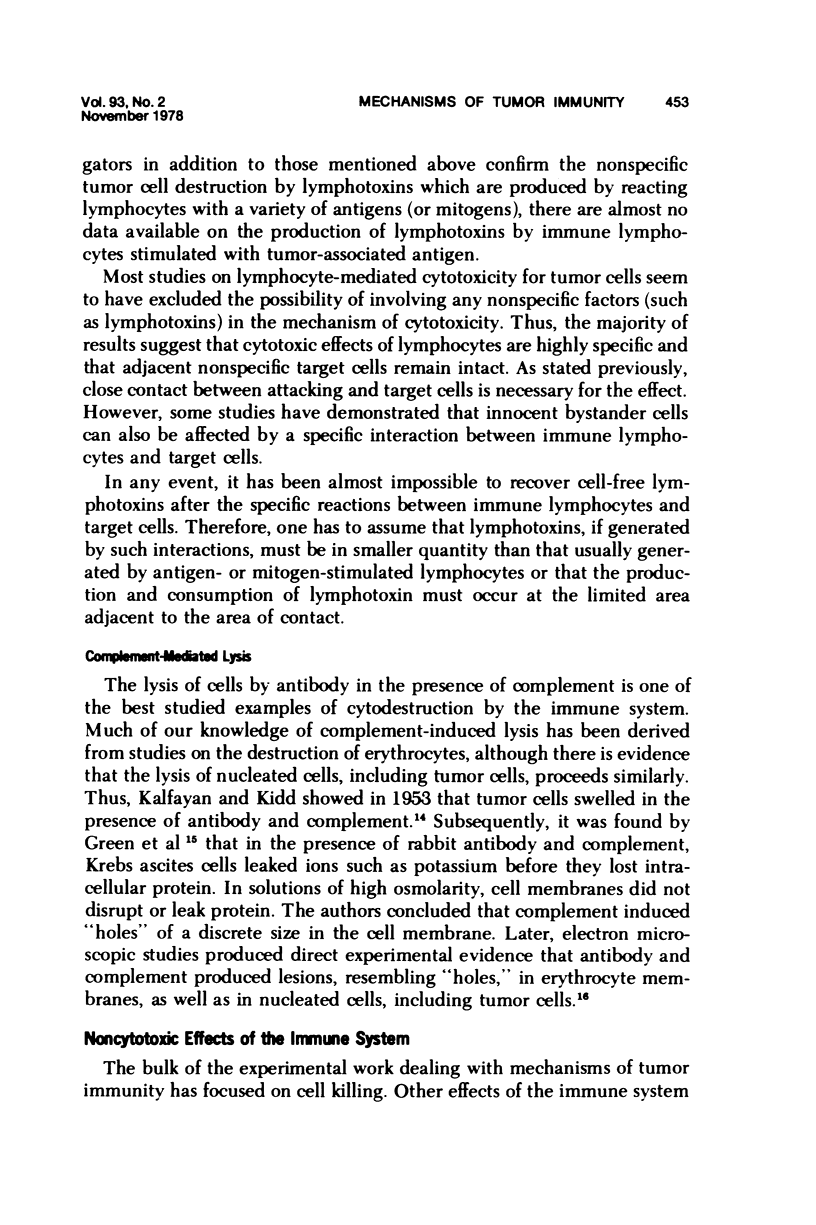
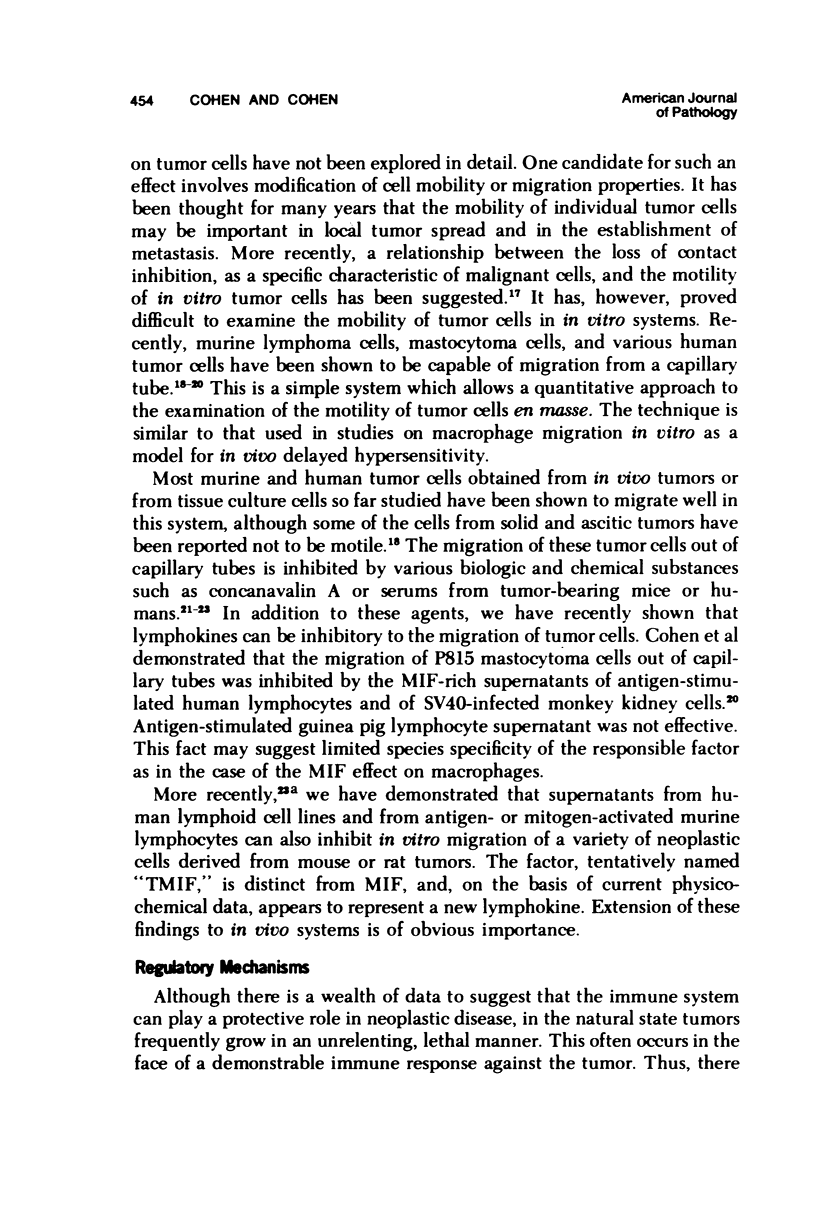
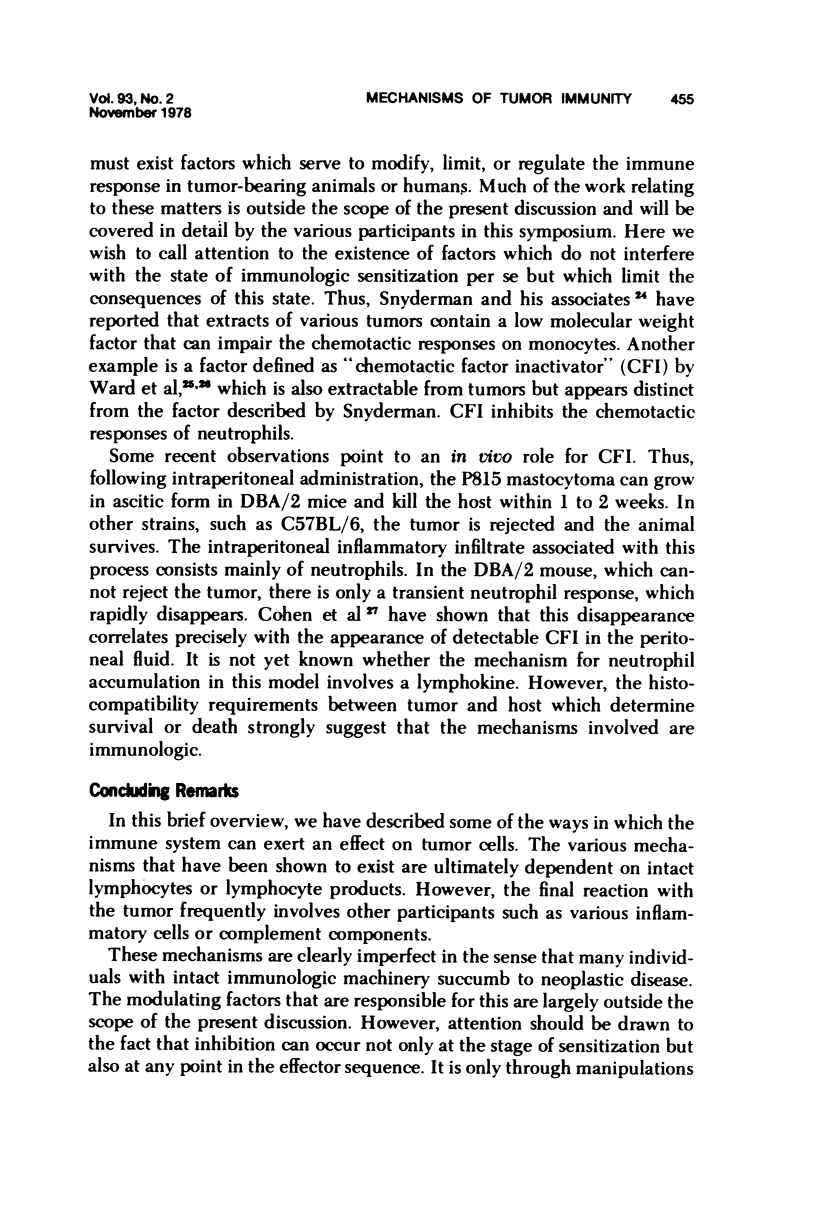
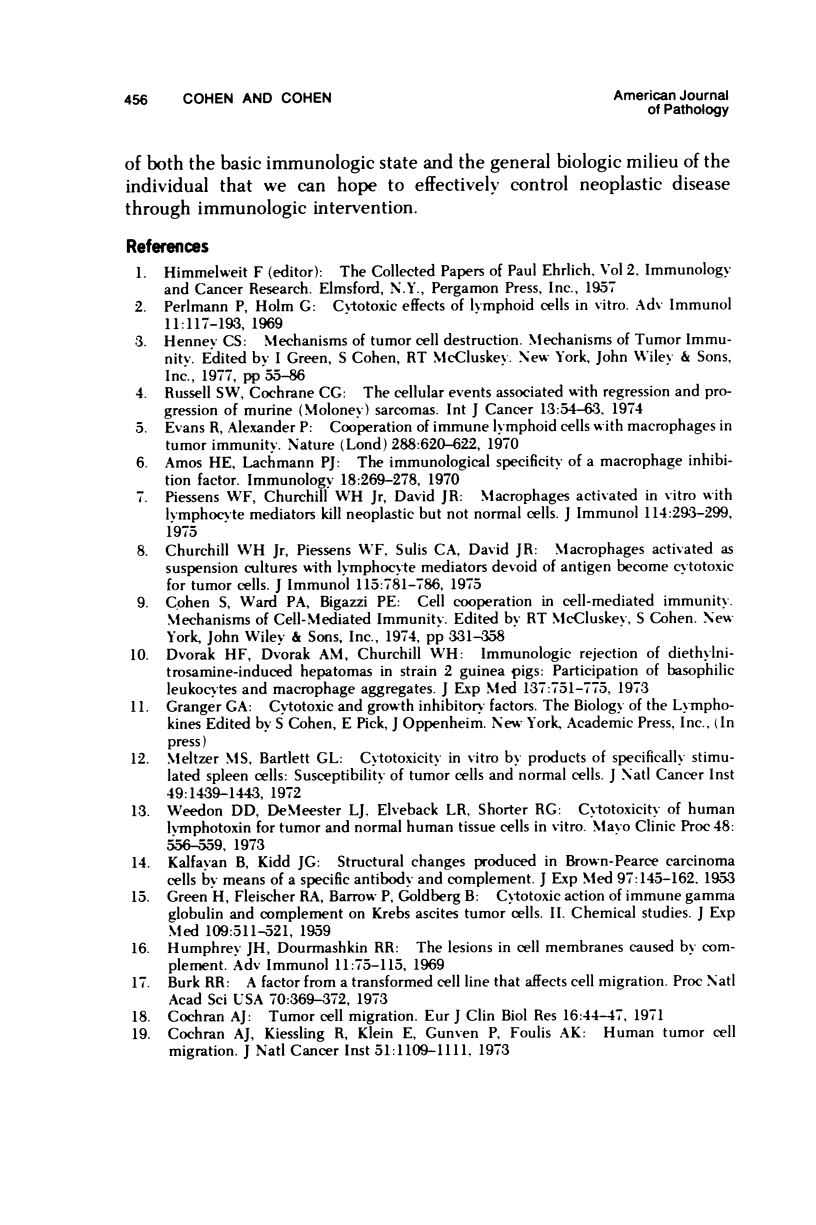
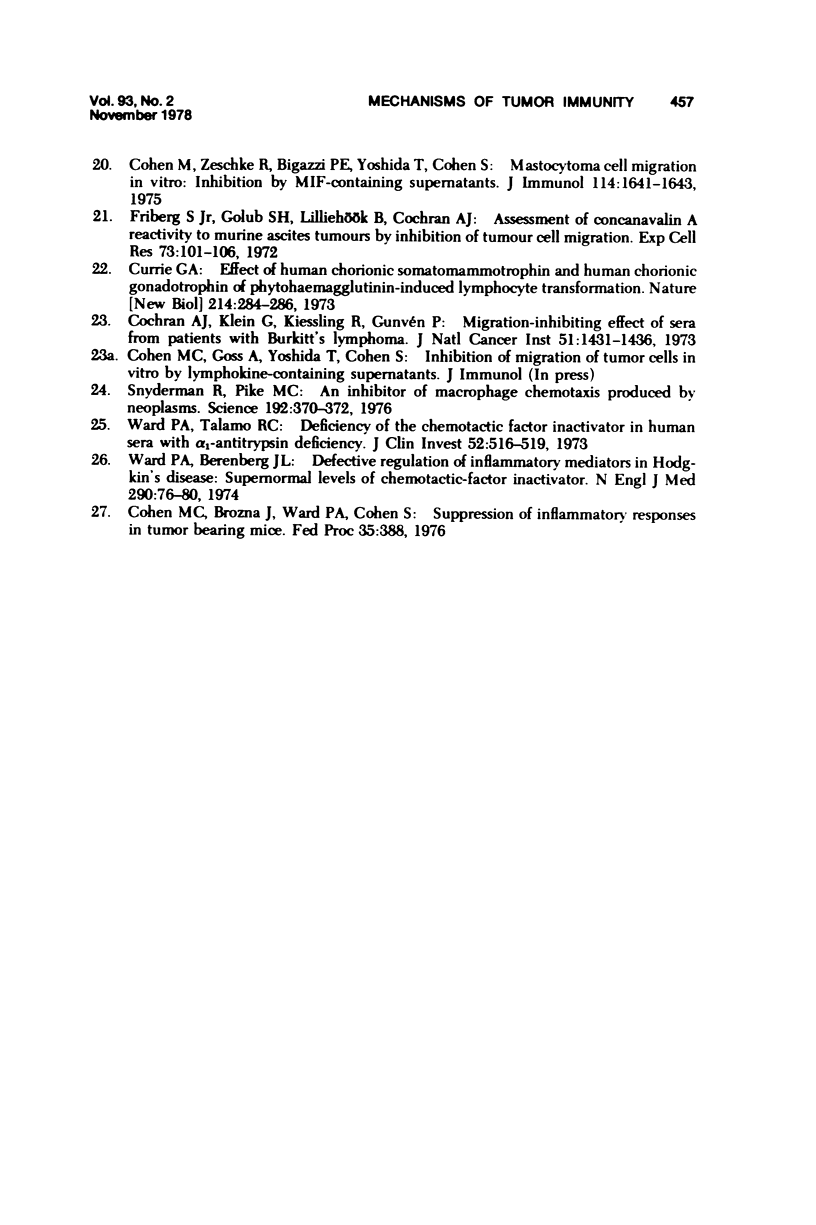
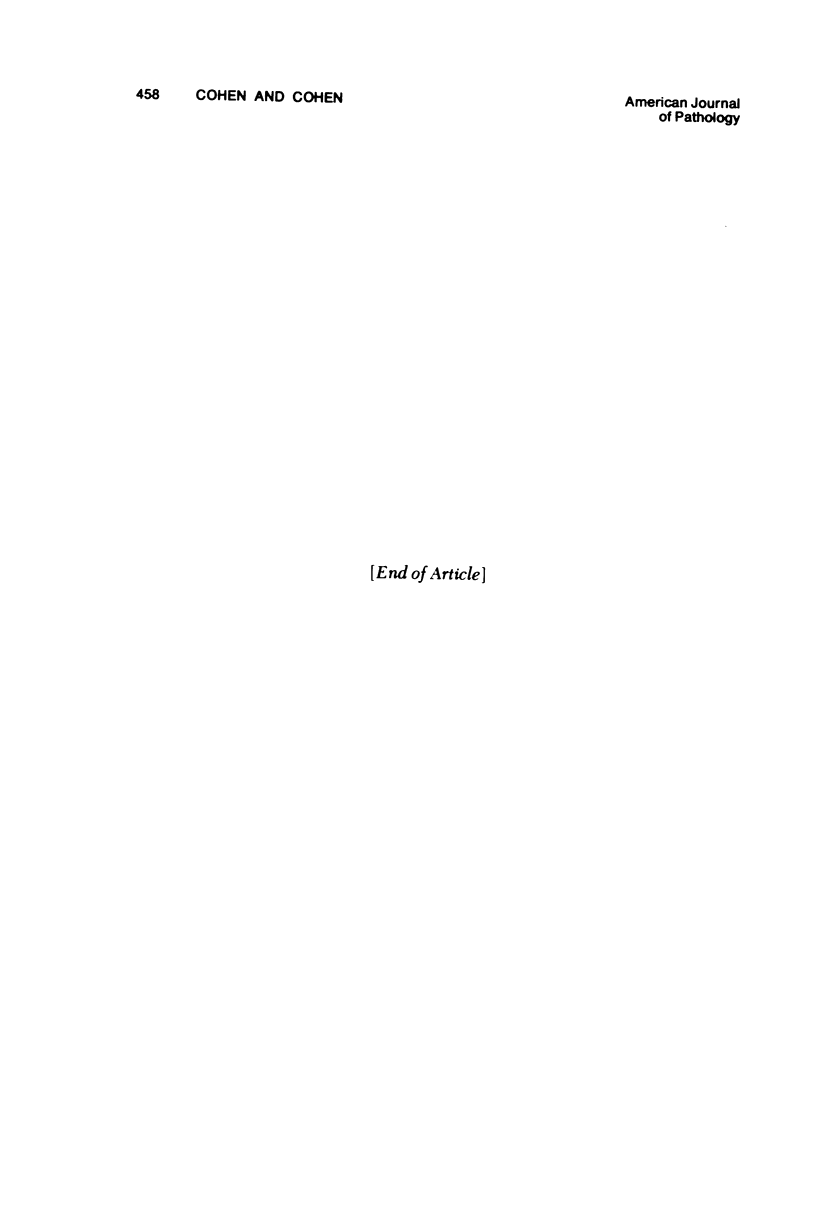
Selected References
These references are in PubMed. This may not be the complete list of references from this article.
- Amos H. E., Lachmann P. J. The immunological specificity of a macrophage inhibition factor. Immunology. 1970 Feb;18(2):269–278. [PMC free article] [PubMed] [Google Scholar]
- Bürk R. R. A factor from a transformed cell line that affects cell migration. Proc Natl Acad Sci U S A. 1973 Feb;70(2):369–372. doi: 10.1073/pnas.70.2.369. [DOI] [PMC free article] [PubMed] [Google Scholar]
- Churchill W. H., Jr, Piessens W. F., Sulis C. A., David J. R. Macrophages activated as suspension cultures with lymphocyte mediators devoid of antigen become cytotoxic for tumor cells. J Immunol. 1975 Sep;115(3):781–786. [PMC free article] [PubMed] [Google Scholar]
- Cochran A. J., Kiessling R., Klein E., Gunvén P., Foulis A. K. Human tumor cell migration. J Natl Cancer Inst. 1973 Oct;51(4):1109–1111. doi: 10.1093/jnci/51.4.1109. [DOI] [PubMed] [Google Scholar]
- Cochran A. J., Klein G., Kiessling R., Gunvén P. Migration-inhibiting effect of sera from patients with Burkitt's lymphoma. J Natl Cancer Inst. 1973 Nov;51(5):1431–1436. doi: 10.1093/jnci/51.5.1431. [DOI] [PubMed] [Google Scholar]
- Cochran A. J. Tumour cell migration. Rev Eur Etud Clin Biol. 1971 Jan-Feb;16(1):44–47. [PubMed] [Google Scholar]
- Cohen M. C., Zeschke R., Bigazzi P. E., Yoshida T., Cohen S. Mastocytoma cell migration in vitro: inhibition by MIF-containing supernatants. J Immunol. 1975 May;114(5):1641–1643. [PubMed] [Google Scholar]
- Evans R., Alexander P. Cooperation of immune lymphoid cells with macrophages in tumour immunity. Nature. 1970 Nov 14;228(5272):620–622. doi: 10.1038/228620a0. [DOI] [PubMed] [Google Scholar]
- Friberg S., Jr, Golub S. H., Lilliehök B., Cochran A. J. Assessment of concanavalin A reactivity to murine ascites tumours by inhibition of tumour cell migration. Exp Cell Res. 1972 Jul;73(1):101–106. doi: 10.1016/0014-4827(72)90106-1. [DOI] [PubMed] [Google Scholar]
- GREEN H., FLEISCHER R. A., BARROW P., GOLDBERG B. The cytotoxic action of immune gamma globulin and complement on Krebs ascites tumor cells. II. Chemical studies. J Exp Med. 1959 May 1;109(5):511–521. doi: 10.1084/jem.109.5.511. [DOI] [PMC free article] [PubMed] [Google Scholar]
- Humphrey J. H., Dourmashkin R. R. The lesions in cell membranes caused by complement. Adv Immunol. 1969;11:75–115. doi: 10.1016/s0065-2776(08)60478-2. [DOI] [PubMed] [Google Scholar]
- KALFAYAN B., KIDD J. G. Structural changes produced in Brown-Pearce carcinoma cells by means of a specific antibody and complement. J Exp Med. 1953 Jan;97(1):145–162. doi: 10.1084/jem.97.1.145. [DOI] [PMC free article] [PubMed] [Google Scholar]
- Meltzer M. S., Bartlett G. L. Cytotoxicity in vitro by products of specifically stimulated spleen cells: susceptibility of tumor cells and normal cells. J Natl Cancer Inst. 1972 Nov;49(5):1439–1443. [PubMed] [Google Scholar]
- Perlmann P., Holm G. Cytotoxic effects of lymphoid cells in vitro. Adv Immunol. 1969;11:117–193. doi: 10.1016/s0065-2776(08)60479-4. [DOI] [PubMed] [Google Scholar]
- Piessens W. F., Churchill W. H., Jr, David Macrophages activated in vitro with lymphocyte mediators kill neoplastic but not normal cells. J Immunol. 1975 Jan;114(1 Pt 2):293–299. [PubMed] [Google Scholar]
- Russell S. W., Cochrane C. G. The cellular events associated with regression and progression of murine (Moloney) sarcomas. Int J Cancer. 1974 Jan 15;13(1):54–63. doi: 10.1002/ijc.2910130107. [DOI] [PubMed] [Google Scholar]
- Snyderman R., Pike M. C. An inhibitor of macrophage chemotaxis produced by neoplasms. Science. 1976 Apr 23;192(4237):370–372. doi: 10.1126/science.946556. [DOI] [PubMed] [Google Scholar]
- Ward P. A., Berenberg J. L. Defective regulation of inflammatory mediators in Hodgkin's disease. Supernormal levels of chemotactic-factor inactivator. N Engl J Med. 1974 Jan 10;290(2):76–80. doi: 10.1056/NEJM197401102900203. [DOI] [PubMed] [Google Scholar]
- Ward P. A., Talamo R. C. Deficiency of the chemotactic factor inactivator in human sera with 1 -antitrypsin deficiency. J Clin Invest. 1973 Feb;52(2):516–519. doi: 10.1172/JCI107209. [DOI] [PMC free article] [PubMed] [Google Scholar]
- Weedon D. D., DeMeester L. J., Elveback L. R., Shorter R. G. Cytotoxicity of human lymphotoxin for tumor and normal human tissue cells in vitro. Mayo Clin Proc. 1973 Aug;48(8):556–559. [PubMed] [Google Scholar]


